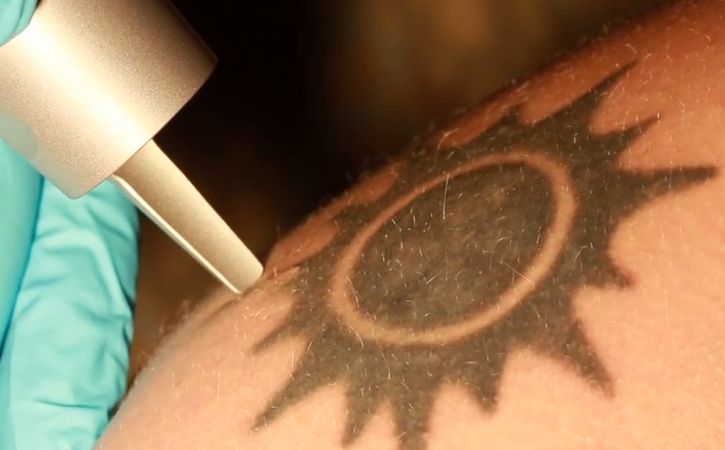Laser Tattoo Removal Breaks Up Ink Droplets For White Blood Cells To Carry Away

Your first tattoo can be a milestone in your life where you become part of the tatted crew. After rolling up your sleeves, squeezing your eyes shut and lightly jerking your arm back and forth when the needle hits the skin, you’ve become filled with tattoo regret. Tattoo remorse does not only make you feel bad, set you back financially — it also leaves you with a great deal of pain. Smarter Every Day YouTube Channel has provided viewers with the science of laser tattoo removal in the horrifying slow-motion video “How Laser Tattoo Removal Works - Smarter Every Day 123.”
According to the U.S. Food and Drug Administration, laser removal has made it easier for the 14 percent out of 21 percent of the American adult population to experience tattoo regret. Recent advancements in skin care technology has made getting rid of ink as simple as it is to get it done. However, as Destin Sandlin, Smarter Every Day host says in the video, “It's a lot harder to get a tattoo off than it is to put it on."
As soon as you get a tattoo, your white blood cells consistently fight to remove the pigments injected in this skin layer. This explains why tattoos begin to get less sharp and fade overtime, but not to the extent of being permanently removed. Laser tattoo removal zaps away the heavy metal in particles of ink since the white blood cells are much smaller than the ink particles to try and get rid of it on its own. The 3:40 mark in the video shows a size comparison between the white blood cells and the ink particles. However, with an ultra-short-pulse laser, the particles are broken up and made small enough for the white blood cells to speed the withering process as capture in 6:55.
The laser helps the white cells carry the ink particles off to the liver so they can be disposed of. Tattoo removal does come with side effects. Color pigments like yellow #7, are known to break down into toxic and poisonous chemicals in the body on exposure to light either via UV light or laser removal. This can lead to these toxic substances traveling your kidneys and liver, according to Natural News.
In most cases, laser tattoo removal is a painful process that is painful and must be repeated a few times to get the full effect. Even after these attempts, the tattoo may not be entirely disintegrated, depending on the pigments and density of the ink used. Perhaps you want to think twice about getting inked, and getting inked in the spur of the moment.



























